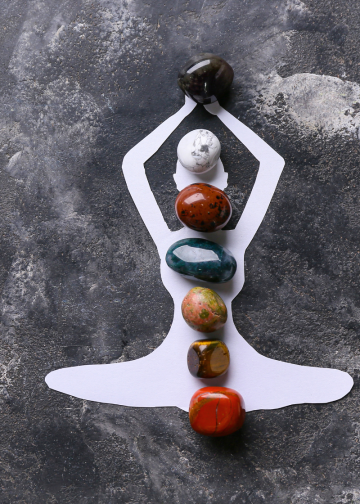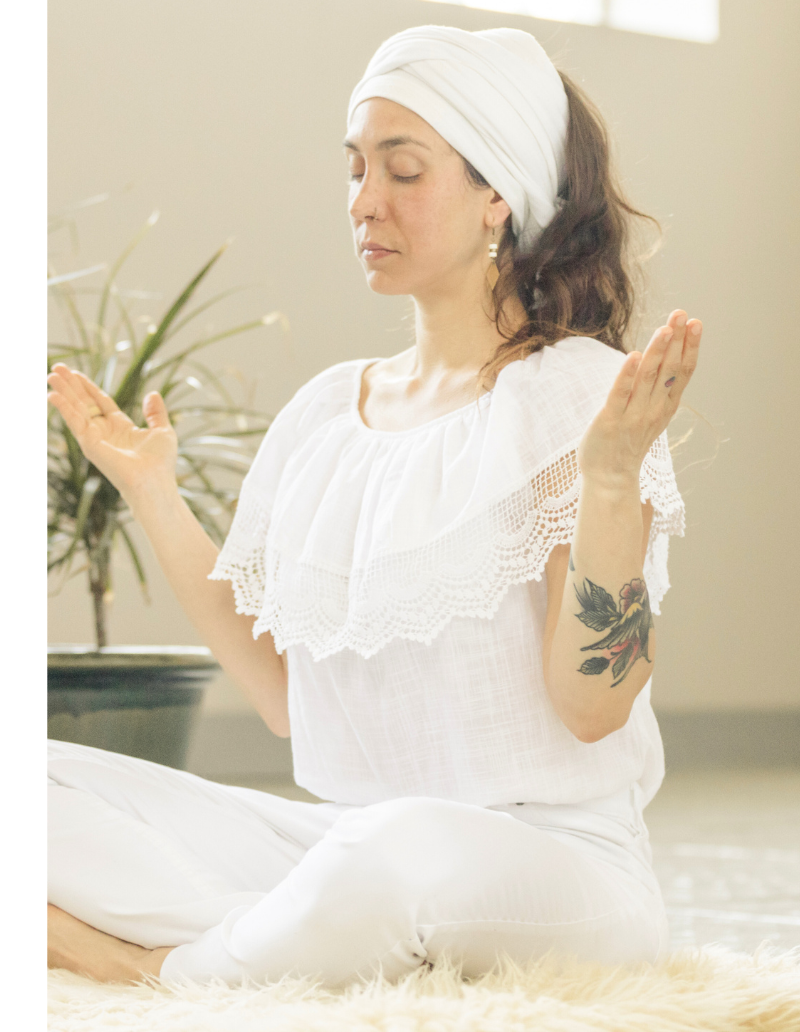
Aligning Your Chakras:
The chakra system is an ancient framework that maps out energy centers within the body, influencing our physical, emotional, and spiritual well-being. Rooted in Indian philosophy, chakras are focal points in Yoga, meditation, and holistic healing. When our chakras are balanced, we experience harmony and vitality; when blocked or excessive, we may face physical ailments, emotional struggles, or spiritual disconnect. Understanding chakras helps us align our energy and cultivate overall well-being.
The History of the Chakra System
The origins of the chakra system can be traced back thousands of years to the Vedas (1500–500 BCE), some of the oldest sacred texts in Hinduism. Early descriptions mention energy centers, or “chakras,” as spinning wheels of prana (life force energy) that interact with nadis (energy channels).
- In the Upanishads, chakras became linked to spiritual awakening and higher states of consciousness.
- Tantric Buddhism and Hinduism refined the seven-chakra system, associating each chakra with specific colors, elements, and mantras.
- In the 20th century, the Western world embraced chakras through Theosophy, Carl Jung’s psychological insights, and New Age practices, expanding their significance beyond Eastern traditions.
Understanding the history of chakras helps us appreciate their depth and how they can be integrated into modern wellness practices.
The Seven Chakras: Balance, Deficiencies & Healing Practices
First: Root Chakra (Muladhara) – “I Am”
- Location: Base of the spine
- Element: Earth
- Color: Red
- You feel grounded, safe, secure, and physically strong when in balance. Your relationships and finances are stable. Deficiencies (Blocked/Underactive Chakra): Fear, anxiety, insecurity, financial instability, and feeling disconnected from the body.
- Excessive Energy (Overactive Chakra): Greed, stubbornness, materialism, resistance to change.
- Healing Practices:
- Meditation: Visualize profound red energy grounding you to the earth.
- Yoga Poses: Mountain pose, Warrior I, Malasana (squat).
- Affirmations: “I am safe. I am grounded.”
- Healing Crystals: Red jasper, garnet, black tourmaline.
- Diet: Root vegetables, protein-rich foods.
Second: Sacral Chakra (Svadhisthana) – “I Feel”
- Location: Lower abdomen
- Element: Water
- Color: Orange
- When in Balance: Creativity, passion, pleasure, emotional openness, healthy relationships.
- Deficiencies (Blocked/Underactive Chakra): Lack of passion, difficulty expressing emotions, guilt, low libido.
- Excessive Energy (Overactive Chakra): Overindulgence, emotional overwhelm, addiction, codependency.
- Healing Practices:
- Meditation: Visualize an orange glowing orb in the lower belly.
- Yoga Poses: Hip openers (Butterfly, Pigeon, Goddess pose).
- Affirmations: “I embrace pleasure. I honor my emotions.”
- Healing Crystals: Carnelian, orange calcite, moonstone.
- Diet: Hydrating foods (coconut water, oranges, melons).
Third: Solar Plexus Chakra (Manipura) – “I Do”
- Location: Upper abdomen
- Element: Fire
- Color: Yellow
- When in Balance: Confidence, personal power, motivation, and transparent decision-making.
- Deficiencies (Blocked/Underactive Chakra): Low self-esteem, willpower, and powerlessness
- Excessive Energy (Overactive Chakra): Controlling, aggressive, ego-driven, perfectionist tendencies.
- Healing Practices:
- Meditation: Sun meditation, visualizing golden light in the solar plexus.
- Yoga Poses: Boat pose, Warrior III, Plank.
- Affirmations: “I am confident. I step into my power.”
- Healing Crystals: Citrine, tiger’s eye, yellow jasper.
- Diet: Spicy foods, ginger, turmeric.
Fourth: Heart Chakra (Anahata) – “I Love”
- Location: Center of the chest
- Element: Air
- Color: Green
- When in Balance: Compassion, love, forgiveness, deep connections.
- Deficiencies (Blocked/Underactive Chakra): Difficulty trusting, loving, and fearing intimacy.
- Excessive Energy (Overactive Chakra): Overgiving, codependency, possessiveness.
- Healing Practices:
- Meditation: Loving-kindness meditation (Metta).
- Yoga Poses: Camel pose, Cobra, Bridge pose.
- Affirmations: “I am open to love. I forgive myself and others.”
- Healing Crystals: Rose quartz, green aventurine.
- Diet: Green leafy vegetables, herbs.
Fifth: Throat Chakra (Vishuddha) – “I Speak”
- Location: Throat
- Element: Ether
- Color: Blue
- When in Balance: Clear communication, self-expression, confidence in speaking truth.
- Deficiencies: Fear of speaking, social anxiety, dishonesty, weak voice.
- Excessive Energy: Over-talking, gossiping, dominating conversations.
- Healing Practices: Singing, chanting, journaling, sipping herbal teas.
Sixth: Third Eye Chakra (Ajna) – “I See”
- Location: Between the eyebrows
- Element: Light
- Color: Indigo
- When in Balance: Intuition, clarity, imagination, strong inner wisdom.
- Deficiencies: Lack of insight, confusion, poor memory.
- Excessive Energy: Overanalyzing, paranoia, nightmares.
- Healing Practices: Meditation, visualization, and dream journaling.
Seventh: Crown Chakra (Sahasrara) – “I Understand”
- Location: Top of the head
- Element: Divine Consciousness
- Color: Violet/White
- When in Balance: Spiritual connection, wisdom, inner peace.
- Deficiencies: Feeling disconnected, depression, lack of purpose.
- Excessive Energy: Spiritual addiction, disconnection from reality.
- Healing Practices: Prayer, meditation, and silent reflection.
Final Thoughts

Balancing chakras fosters holistic well-being. Integrating meditation, a Yoga diet, and affirmations into daily life enhances harmony. Tuning into our chakras cultivates a deeper connection with ourselves and the world.
Listening to your body is essential in this journey. Body scanning meditation helps you identify tension or energy imbalances, allowing for conscious healing. Tuning in to sensations, emotions, and subtle shifts in energy can provide valuable insights into what needs attention.
Keeping a journal is a powerful tool for chakra work. Writing down emotions, recurring thoughts, or physical sensations that arise during meditation can reveal patterns and areas that need focus. Journaling also supports emotional release and self-reflection, reinforcing mindfulness and intentional living.
By incorporating these practices, we cultivate a deeper awareness of ourselves, fostering a life of balance, clarity, and vitality.
photo © microgen images via canva.com
photo © netron via canva.com
photo © pixel shot via canva.com
photo © arina krasnikova via canva.com
photo © mme emile via canva.com




